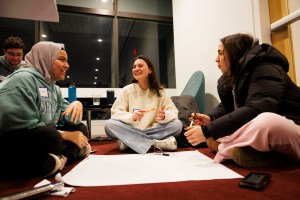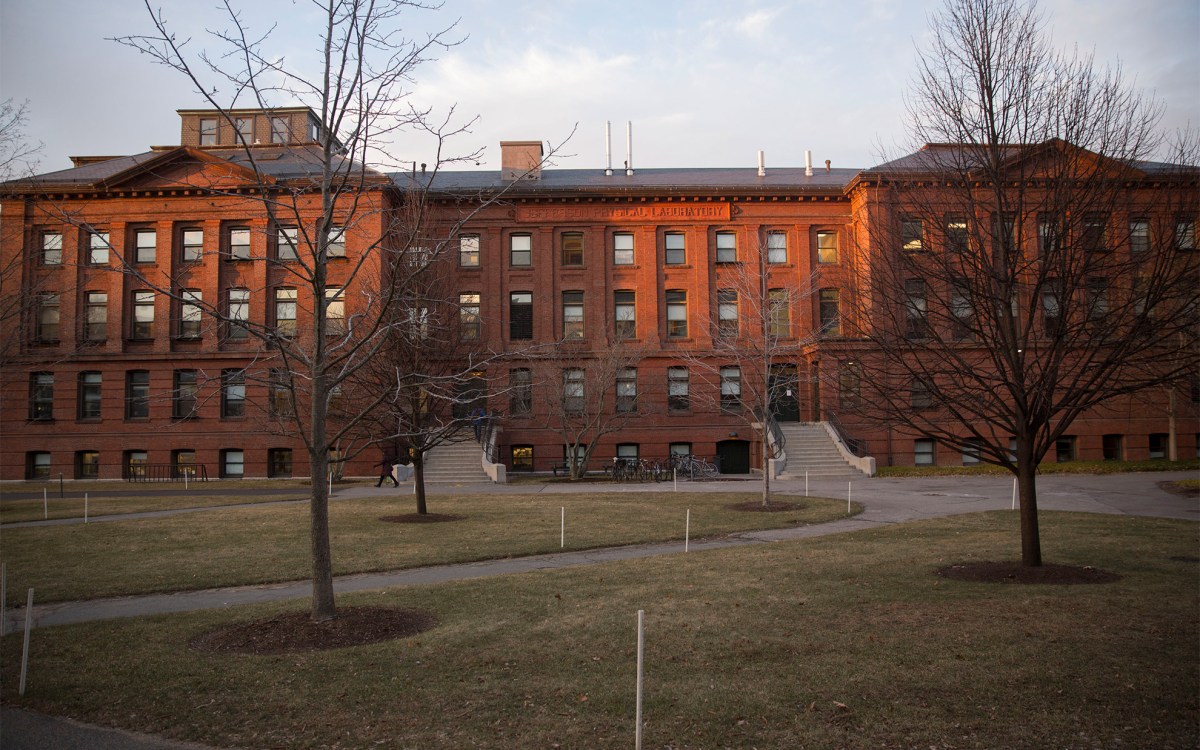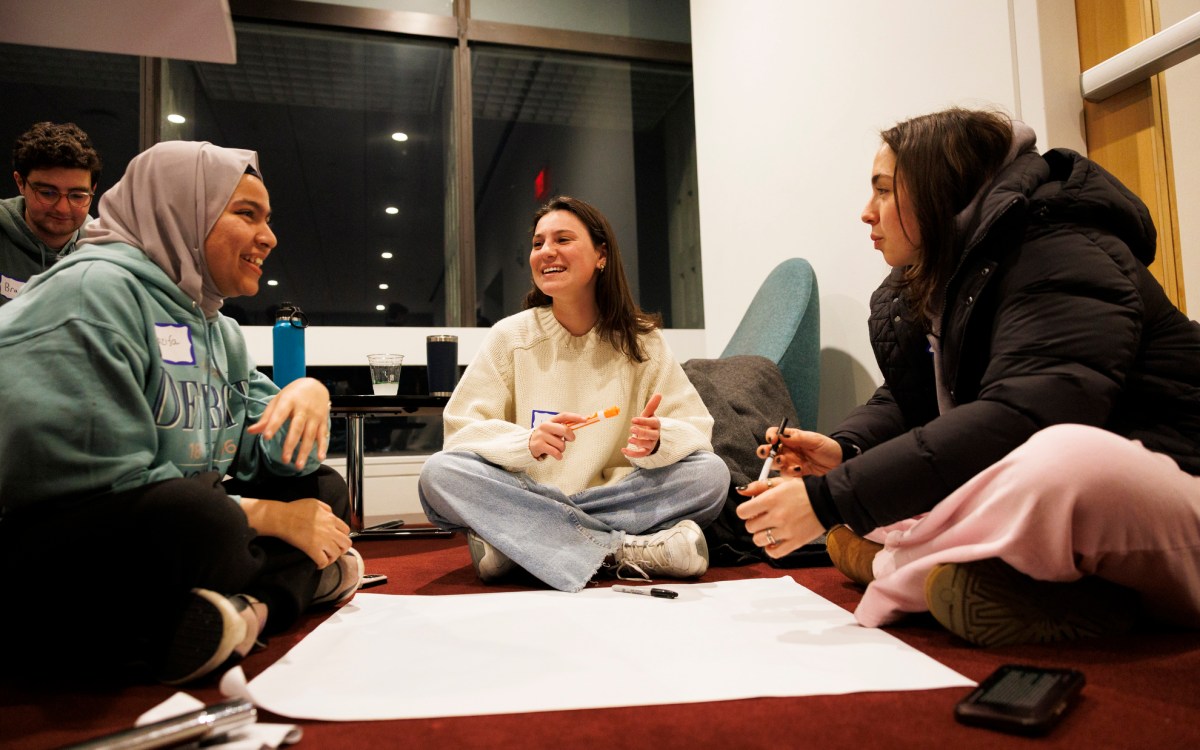Linking literacy with living
GSE professor explores how reading lessons can also be lessons in social awareness

For generations, literature has been pressed into the service of teaching values. Whether the overtly religious themes of the Bible, Dick and Jane’s two-parent suburban values, or the moral exhortations of William Bennett’s “The Book of Virtues,” lessons often prove loftier than simply vocabulary and grammar.
And for 30 years, Graduate School of Education (GSE) Professor Robert Selman has probed the development of social awareness among children, an awareness that informs the values they internalize. At the center of his work for the past decade is the integration of social awareness and literacy: Alongside reading skills, can children learn core skills like hearing – and then coordinating – points of view other than their own and negotiating risk, conflict, and relationships?
The teaching of ethics and values is tricky enough; it’s a field littered with academic, political, and cultural landmines. But Selman, who is the Roy Edward Larsen Professor of Education and Human Development, and the chair of the GSE’s Human Development and Psychology Department, has taken the challenge one step farther. He’s conducting his research not in the rarified air of a laboratory, but amidst the clatter and chaos of real classrooms packed with real kids and led by real teachers. This practice-based research, he says, produces powerful results.
Read an interview with Robert Selman:
www.gse.harvard.edu/news/features/selman02012003.html
“The traditional assumption of an academic researcher is that you get your inspiration in practice, you run back to your lab, you do the research, you get your evidence, and you bring your evidence to the practitioner,” says Selman. “And certainly, we have been able to learn a great deal in this way. Unfortunately, delivering useful research insights in a meaningful way to the world of practice is difficult and often not successful. My claim is that the research can be richly powerful and valuable and the delivery of its insights complete and successful when it is done right in the heart of the practice. For us, that now means the classroom.”
From egocentric to socially aware
Selman, who has chronicled his work in a new book, “The Promotion of Social Awareness” (Russell Sage Foundation, 2003), defines “social awareness” broadly. “It includes both the awareness that kids growing up have of social relationships and their awareness of the risks they face in growing up,” he says. A developmental psychologist with affiliations at Boston’s Children’s Hospital and the Judge Baker Children’s Center, where earlier in his career he worked with children who had severely disturbed social relationships, Selman has trained a developmental lens on how kids’ understanding of friendships and relationships changes as they get older.
While researchers might tout a wide range of social skills – or competencies – they believe children should develop, Selman has distilled his view into what he describes as a core competency: the coordination of social perspectives.
“It develops from a natural inclination to an egocentric perspective of very young kids to an increasing capacity to step outside of one’s point of view and understand the relationship of your own point of view to that of others,” he says. His primary research question concerns the natural developmental progression of kids’ social awareness, a topic that’s hotly debated in the research world.
“Then the intervention question is, ‘Can you facilitate this awareness through good pedagogy?’” he adds. Moving these questions out of the laboratory and into practice, Selman wonders if that pedagogy might include carefully chosen texts, and if literature is used to promote social awareness, can social awareness improve reading skills?
Felita and Amazing Grace
To bring his theories into the classroom, Selman has enlisted the assistance of two girls. Grace is a spirited Afro-Caribbean girl who desperately wants the role of Peter Pan in a school play, despite classmates’ objections that she is neither white nor male. Felita has just moved with her family in the 1950s from their Puerto Rican neighborhood in New York City to one with better educational opportunities but unwelcoming neighbors and playmates.
Felita and Grace are fictional characters, of course; they live in books – “Amazing Grace” and “Felita” – that Selman selected because they put themes of social awareness front and center. Working alongside teachers and using the students’ own classroom work as data, Selman and his researchers are exploring how to develop a curriculum that promotes social awareness as well as literacy using books like these.
“It’s not obvious and it’s not easy. There is no road map to doing this,” he says. Yet the benefits of this practice-based research seem to far outweigh the challenges. Teachers, says Selman, “absolutely love engaging with us on this kind of work.” And for researchers, working in the classroom produces compelling data based in the real world. “Situating research in the classroom helps to close the gaps in the information highway,” says Selman.
In the classroom, researchers and teachers together can witness kids’ ascending levels of social awareness through their written responses to social issues in the stories: how, for instance, Felita deals with the children who treat her poorly because she and her family are outsiders in their new neighborhood. The inclusion of teachers in the feedback loop infuses the data with authenticity. A teacher might know, for instance, that a certain student just moved with his own family to a new neighborhood, or that another student has a best friend of a different race.
Selman and his doctoral students are now working to develop literacy and social awareness rubrics for a story like “Felita,” coding the writing and discussion they have gathered from kids, looking at both literacy and social awareness. He is optimistic that social awareness can be promoted alongside vocabulary, writing skills, and oral language proficiency.
“We’re starting to get some evidence that by carefully designing the curriculum of a literacy program so that it utilizes texts that engage kids around issues of social relationships, of social justice, you really can promote the development of these competencies in kids more effectively,” he says.
“There’s still a lot of work to be done, both on the research side and on the politics of the relationship of developmental research to classroom practice. It’s messy and it’s confusing and it requires sorting out what’s science and what’s values and what’s politics and what’s policy,” Selman adds, acknowledging that despite the challenges ahead, “I think this is a good place to be in a school of education.”




